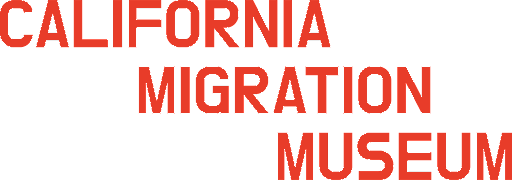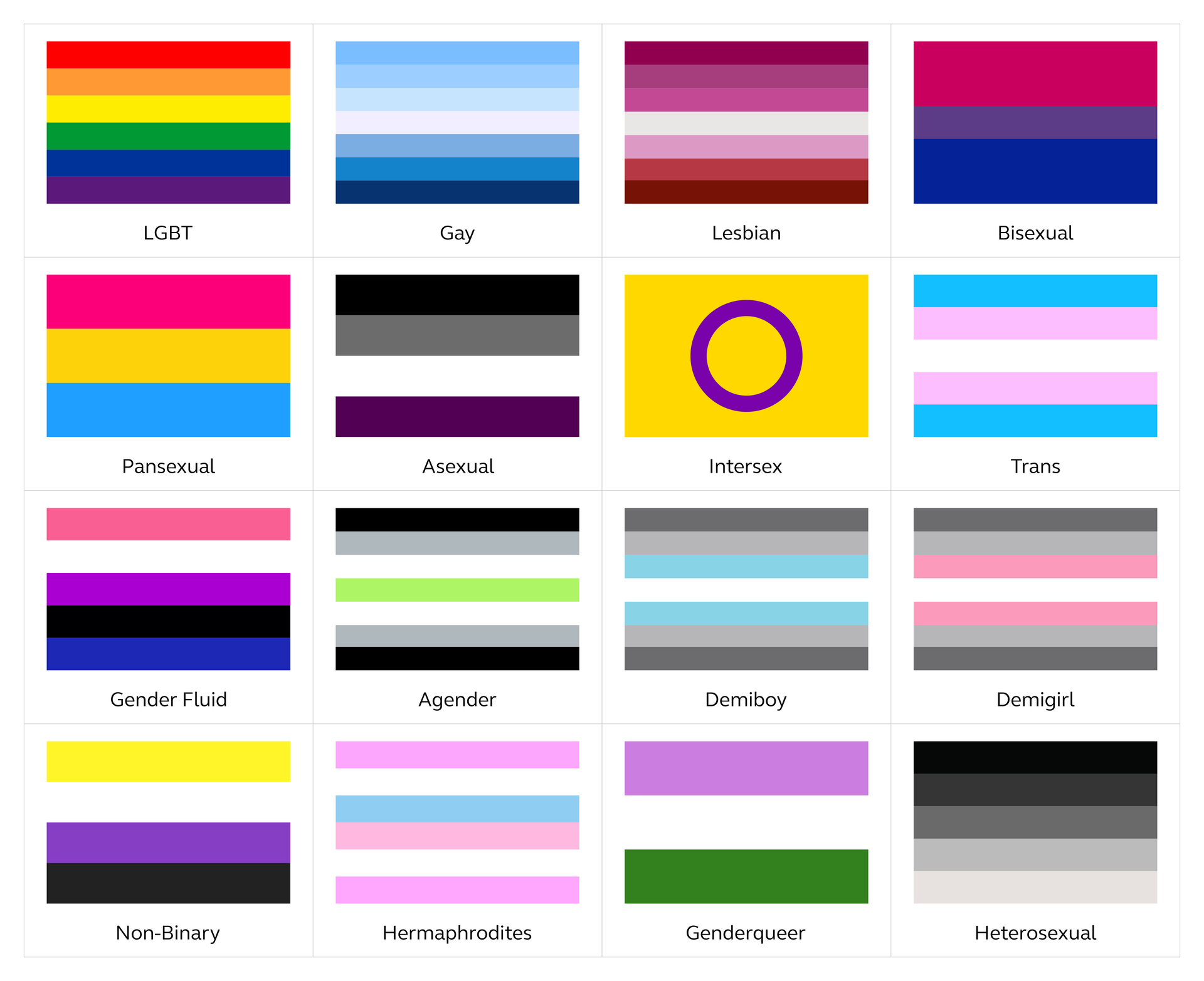Pride Flags
The two original eight-color rainbow flags flying at United Nations Plaza during San Francisco Gay Freedom Day 1978. Photograph by Mark Rennie, courtesy of the Gilbert Baker Foundation.
As we hear at the end of At Home in the Castro? the huge rainbow flag flying at the corner of Market and Castro streets is both a marker of the neighborhood border, and a global symbol of queer pride.
In 1977, Harvey Milk asked the American artist, drag queen, and activist Gilbert Baker to create a new symbol for the growing LBGTQ community, and the new era of gay consciousness and freedom.
At this point, a pink triangle was the most recognizable symbol used by gay activists, but the triangle represented a dark chapter in the history of same-sex rights, having been created by the Nazi part during World War II in order to label and exclude homosexuals in concentration camps. Milk wanted his community to also have a more joyous and optimistic symbol.
Every June, as part of Pride celebrations in San Francisco, a pink triangle is installed atop Twin Peaks, a memorial to those persecuted by the Nazis as well as the toll of the Aids Epidemic in the 1980s. Credit: David Yu, CC BY-NC 2.0 DEED
Baker had arrived in San Francisco in 1972 during the early years of the Gay Liberation movement. He quickly became known for his sewing skills and flamboyant creations, such as drag costumes and political banners. Inspired by America’s stars and stripes, Baker decided this new symbol should be a flag—a political symbol of belonging. Using color to establish meaning, Baker conceived a flag that would empower his “tribe” using a “rainbow of humanity” motif to represent the queer community’s diversity. He assigned symbolic meaning to each of the flag’s eight colored stripes: pink for sex, red for life, orange for healing, yellow for sunlight, green for nature, turquoise for magic and art, blue for serenity and purple for spirit.
Along with a group of activists, Gilbert hand dyed and sewed two 30’ x 60’ eight color flags to be flown at San Francisco’s United Nations Plaza for the 1978 Gay Freedom Day Parade. The flag was simplified to six colors a year later to accommodate flag industry standards, so that it could be mass produced to meet the overwhelming demand for this new symbol of hope and liberation.
“I thought of the American flag with its thirteen stripes and thirteen stars, the colonies breaking away from England to form the United States. I thought of the vertical red, white, and blue tricolor from the French Revolution and how both flags owed their beginnings to a riot, a rebellion, or revolution. I thought a gay nation should have a flag too, to proclaim its own idea of power.”
Towards Inclusion
Flags are political symbols, representing what historian Benedict Anderson called “imagined communities”— places where everyone is connected by a shared sense of identity. For the gay community, the rainbow flag is a marker of that identity, an aspirational statement of inclusion.
Yet as we hear in At Home in the Castro?, queer community is endlessly diverse within itself. While the six-striped rainbow flag is still the most commonly-seen iteration worldwide, the design has also been changed, amended and critiqued, most recently in relation to debates over transgender and intersex representation.
Throughout the 1990s, activists including Michael Page, creator of the Bisexual Pride flag, and Monica Helms, creator of the Trans Pride flag, flown for the first time in 2000, began to create new symbols designed to represent more specific demographics. While LGBTQ+ rights and visibility has accelerated in the last few decades, trans activists and queer people of color were often left out of the story. Discussions of inclusivity, awareness and due credit have driven variations of Baker’s original design, and reflect how understandings of identity and belonging are not fixed, but instead change over time.
Today, pride flags are used globally. As a global symbol, wearing or waving the Rainbow Flag has become an important means of expressing solidarity with queer communities still facing persecution from state authorities, many of which have tried to ban the flag and its color theme.
At the 2022 Football World Cup, the hosts Quatar — a country in which homosexual activities are punishable by up to 7 years in jail — refused to allow European teams competing to wear rainbow-themes “one love” armbands supporting LGBTQ+ rights, and blocked some fans wearing the Rainbow Flag from entering stadiums. But other activists have criticized flag-wearing as largely performative allyship. European teams at the World Cup, for instance, agreed not to wear armbands when faced with Qatari opposition to the Pride Flag. For most of us, wearing pride colors or using a Rainbow Flag filter on social media posts is an easy way to show solidarity: but does that make it meaningful?
Some of the varied flags that have been designed to represent different groups within the LGBTQIA+ community
Intersex-inclusive pride flag by Valentino Vecchietti
2022 FIFA World Cup. LGBTQ Symbols were not welcome in Qatar’s stadiums. Doha, Qatar, 24 November 2022. Credit: Koran Ministry of Culture, Sports and Tourism, Heo Manjin
Want to Learn More?
‘The Pride Flag has a Representation Problem’, The Atlantic
Where Flying the Pride Flag Wasn’t So Simple, New York Times
The Gilbert Baker Foundation





